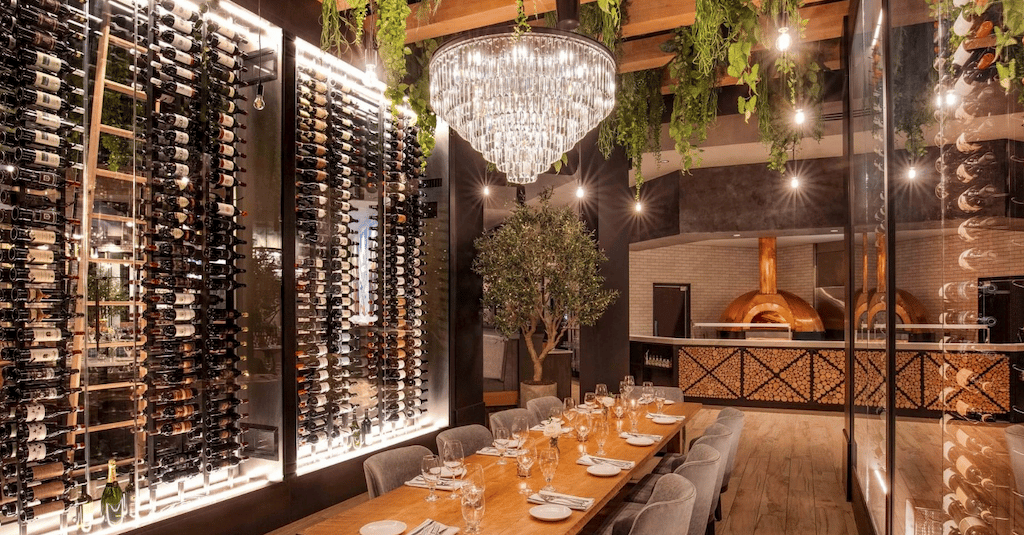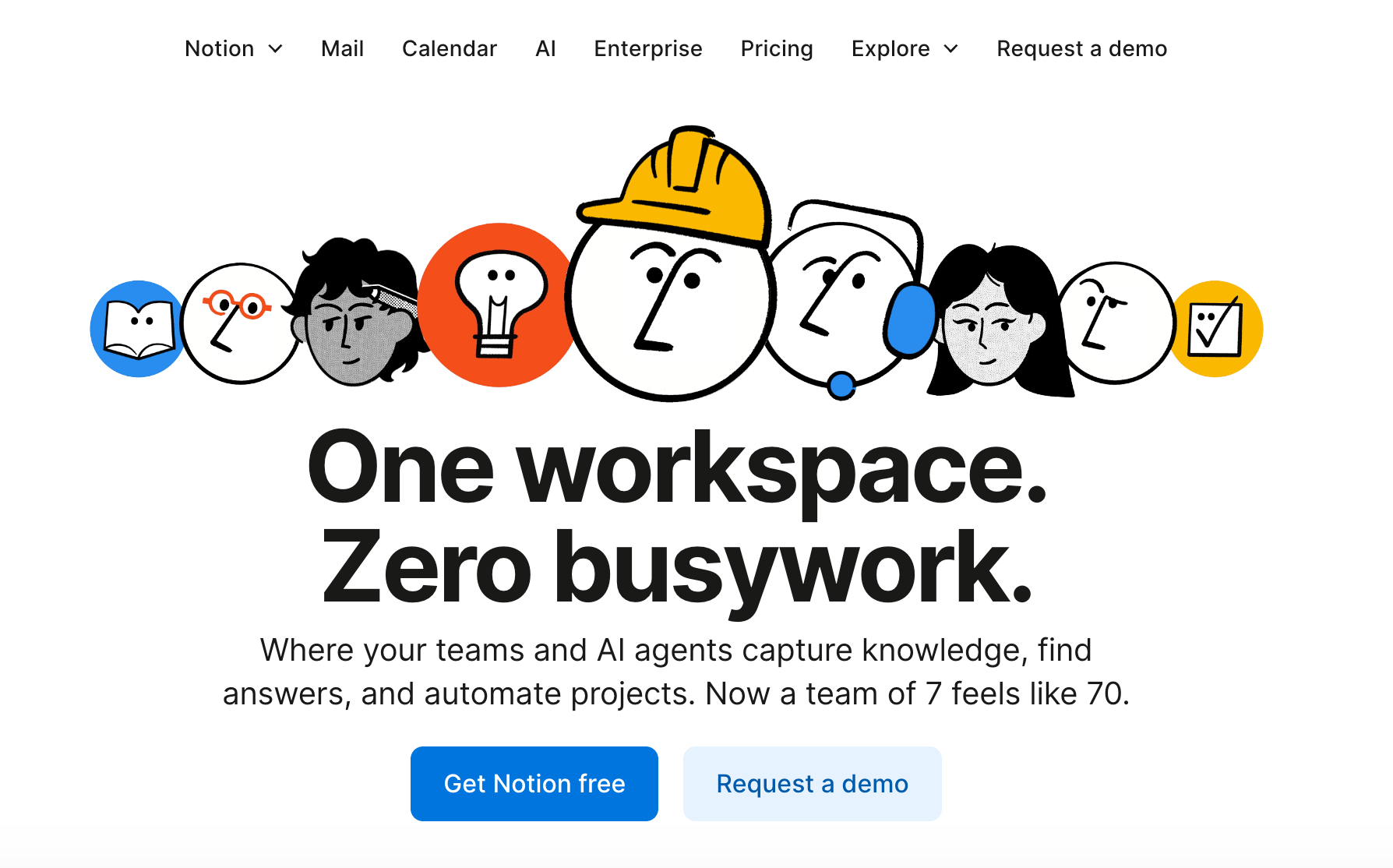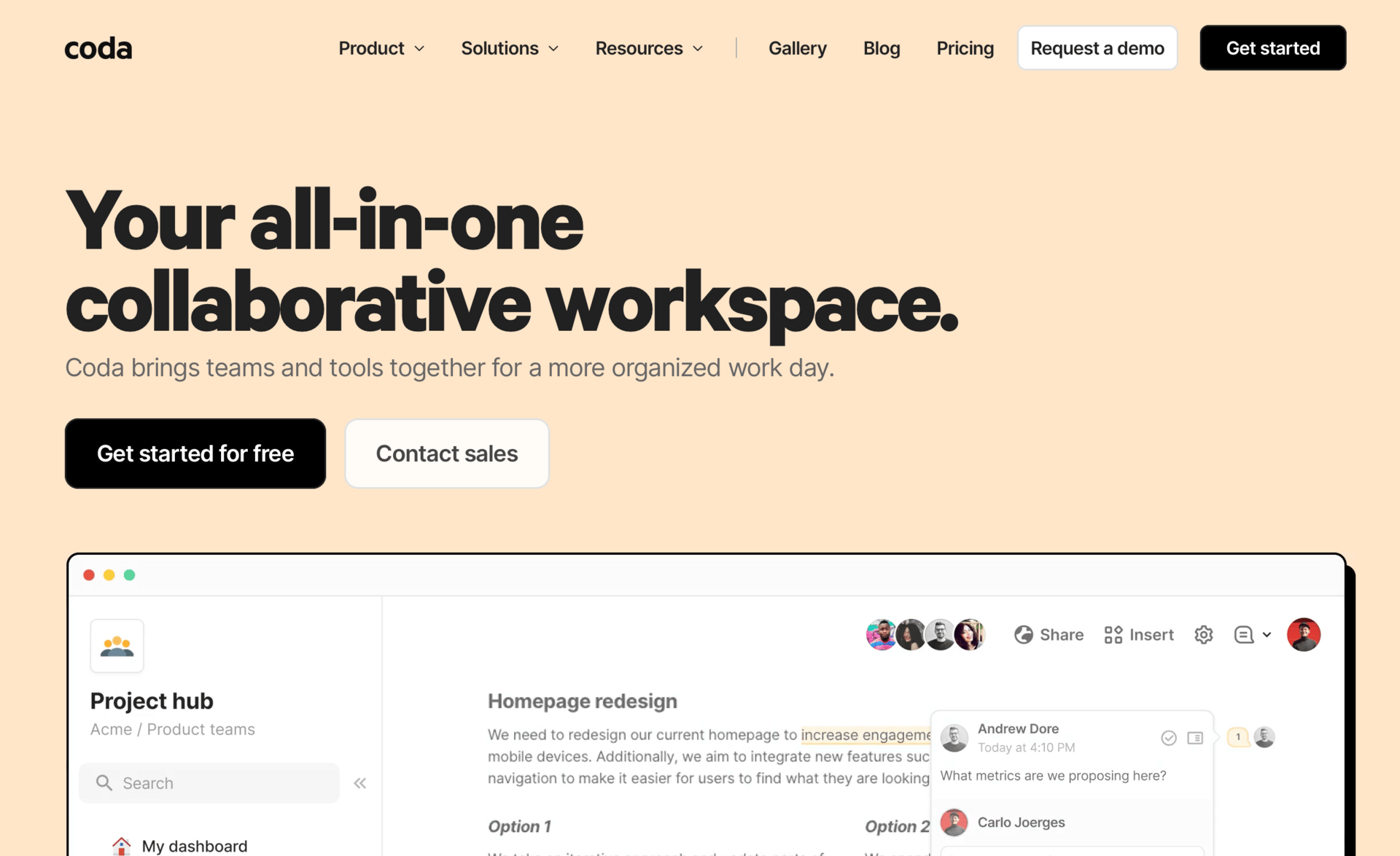This is a 4-part series on how to produce content with AI that people actually remember.
PRO MEMBERS: Scroll down to the bottom for pro membership access links.
The 90-Day Transformation: How to Train Your Taste Using AI
In Part 1, we diagnosed the crisis: the taste gap is widening, AI is accelerating mediocrity, and most marketers were systematically trained to ignore aesthetic judgment. You took the 60-second test. You saw where your brand stands. You chose Option 3.
Now comes the hard part: actually developing taste. Not reading about it. Not agreeing that it matters. Not forwarding this to your team with a "thoughts?" Actually doing the work. This is the 90-day transformation that helped CMOs go from "I know what I like" to "I know what works and can articulate why with precision."
It's not a theory. It's a daily practice. And it uses AI not as your replacement, but as your training partner. Let's begin.
The foundation: Why taste is trainable (and why you were told it isn't)
Before we get into the program, let's kill a myth that's probably sitting in the back of your mind: "Some people are just naturally creative. I'm not one of them."
Bullshit. Taste isn't a mystical gift bestowed upon the chosen few who went to art school or grew up in Milan. It's pattern recognition, vocabulary, exposure, and practice.
You already have taste in other domains—you just don't call it that.
You can walk into a restaurant and immediately know if it's trying too hard.
You can spot a fake Rolex from across the room.
You can tell within 30 seconds if a movie is going to be good based on the opening shot.
You can sense when someone's LinkedIn post is authentic versus when they hired a ghostwriter who doesn't quite have their voice.

Pizza oven + extreme long wine list = probably a good restaurant
That's taste. You're exercising aesthetic judgment constantly. You just haven't formalized it. You haven't built the vocabulary to articulate what you're seeing.
And you definitely haven't applied it systematically to your marketing. The reason you think you don't have taste is that the system trained you not to trust it.
"Don't bring me opinions, bring me data."
"What does the test say?"
"That's too subjective."
"How do we know it'll work?"
For decades, you've been rewarded for suppressing aesthetic judgment and optimizing for metrics. Your taste didn't disappear. It just atrophied from disuse. But hey, muscles rebuild faster the second time.
How the 90-day transformation works
Is this a course? No. This isn't a course. It's more like a systematic practice regimen. Think of it like learning a language through immersion, not through memorizing grammar rules. You're not going to study taste—you're going to practice seeing.
The program has four core practices:
The Deconstruction Practice (15 min/day) - You learn to see craft by reverse-engineering great work
The Comparison Method (10 min/day) - You build discernment by analyzing quality gaps
The Reference Collection (10 min/week) - You define YOUR aesthetic point of view
The Application Sprint (2 hours/week) - You test your taste on real work
Total time investment: 30 minutes per weekday + 2 hours on weekends = 4.5 hours per week.
That's it. That's the commitment. Maybe a lot? Maybe yes, but you probably doom scroll more on your phone in a week. And this is only for 90 days. Think of it as a self-development sprint.
In 90 days, your eye will change. You'll see things you couldn't see before. You'll articulate judgments you couldn't articulate before. And most importantly, you'll know what to say yes to—and what to kill.
Now let's break down each practice.
Practice 1: The Deconstruction Practice (Days 1-30)
What you're training
The ability to see craft, not just content. Most marketers look at a piece of content and think "I like it" or "I don't like it." That's not taste, that's preference.
Taste is the ability to see why something works. To identify the specific craft decisions that create the emotional response. The Deconstruction Practice trains you to see craft by reverse-engineering great work.
How it works
Every morning for 30 days, you deconstruct one piece of exceptional work. Not good work. Not "this performed well" work. Exceptional work. The kind that makes you stop scrolling. The kind you remember three years later.
Set a timer for 15 minutes. Pick a piece. And answer these questions using AI as your sparring partner.

Notion’s home page is a good example of exceptional positioning and messaging
Copy/Messaging:
What's the first sentence doing? (Hook, context, tension, promise?)
Where does the rhythm change? (Short sentence after long ones, one-word sentences, repetition?)
What's the reading level? (Sophistication vs. accessibility?)
What words carry the emotional weight? (Verbs, adjectives, specificity?)
What's not being said? (Restraint, what they left out?)
Visual:
What's the first thing your eye sees? (Hierarchy, contrast, scale?)
What's the second thing? (Intentional eye path or chaos?)
What's the typographic decision? (Font choice, weight, spacing, alignment?)
What's the color doing? (Emotion, contrast, harmony, tension?)
What's the white space doing? (Breathing room, premium feel, focus?)
Structure:
How does it start? (Direct, narrative, provocation, question?)
How does the middle build? (Tension arc, examples, logical progression?)
How does it end? (CTA, reflection, cliffhanger, emotional peak?)
Point of View:
What does this say about the brand? (Identity, values, taste?)
What is this NOT? (What aesthetic did they reject?)
Who is this for? (And equally important: who is it not for?)
Your AI prompt for daily deconstruction:
I'm training my taste by deconstructing exceptional marketing work.
Here's the piece I'm analyzing: [paste content or describe visual]
Help me reverse-engineer the craft decisions:
1. COPY ANALYSIS:
- Identify the hook mechanism in the first sentence
- Map the rhythm changes (where does pacing shift and why?)
- Highlight the 5 words carrying the most emotional weight
- Point out what's deliberately NOT being said
2. VISUAL ANALYSIS (if applicable):
- Describe the intentional eye path (1st, 2nd, 3rd thing you see)
- Identify the typographic hierarchy and why it works
- Analyze the color choice (emotional intention)
- Explain what the white space is accomplishing
3. STRUCTURAL ANALYSIS:
- How does the opening create tension or curiosity?
- How does the middle maintain momentum?
- What makes the ending memorable?
4. AESTHETIC JUDGMENT:
- What is this brand committing to? (Their taste position)
- What aesthetic did they explicitly reject?
- What audience does this alienate (by design)?
Don't just describe what's there. Tell me WHY these specific choices work together to create the effect.
I want to learn to see craft, not just content.What to deconstruct:
Week 1-2: Email campaigns
Find exceptional welcome emails, launch emails, storytelling newsletters. Brands to study: Morning Brew, Milk Road, Stratechery.
Week 3-4: Landing pages
Study conversion pages that don't feel like conversion pages. Brands to study: Stripe, Linear, Notion, Superhuman.
Week 5: Long-form content
Essays, thought leadership, manifestos. Study: Paul Graham essays, Stratechery, Wait But Why, Aeon.
Week 6: Social/Short-form
LinkedIn posts, Twitter threads, IG carousels that break through the noise. Study: Wes Kao, Lenny Rachitsky, Anthony Pompliano.
The critical insight: After 30 days of deconstruction, you'll start seeing patterns. You'll notice that great work always has intentional restraint. That emotional weight comes from specificity, not adjectives. That rhythm changes signal transitions. That white space isn't "empty"—it's doing work.
You won't be able to unsee it. Every piece of content you encounter will reveal its craft decisions to you. That's when you know your eye is changing.
Practice 2: The Comparison Method (Days 31-60)
What you're training
The ability to discern quality from mediocrity Seeing craft in great work is step one. But taste isn't just recognizing excellence—it's distinguishing between good, great, and mediocre. It's building calibration. The Comparison Method trains this by forcing you to articulate quality gaps.
How it works
Every day for 30 days, you find TWO pieces of content solving the same problem:
One exceptional
One mediocre
Set a timer for 10 minutes. Compare them side by side. And answer:
What is the mediocre version doing that undermines itself?
What is the exceptional version doing that the mediocre one isn't?
If you could make ONE change to the mediocre version, what would it be?

If Notion was good, Coda is mediocre with a generic main message and positioning
Your AI prompt for daily comparison:
I'm training my taste by comparing quality levels.
EXCEPTIONAL VERSION: [paste or describe]
MEDIOCRE VERSION: [paste or describe]
Both are trying to accomplish: [same goal—welcome email, product launch, thought leadership, etc.]
Help me articulate the quality gap:
1. WHAT UNDERMINES THE MEDIOCRE VERSION?
- What specific choices make it forgettable?
- Where does it follow templates instead of thinking?
- What's working against itself?
2. WHAT ELEVATES THE EXCEPTIONAL VERSION?
- What specific choices create resonance?
- Where does it break convention intentionally?
- What's the one thing the mediocre version is missing?
3. THE ONE-CHANGE TEST:
If you could make ONE change to the mediocre version to move it toward exceptional, what would it be? (Not "do everything better"—one specific, actionable change.)
Help me build vocabulary around what separates good from great.What to compare
Week 1-2: Value propositions
Compare homepage headlines. Exceptional vs. benefit-stacking-jargon-soup. Example pair:
Exceptional: "One workspace. Zero busywork."
Mediocre: "Your all-in-one collaborative workspace."
Week 3-4: Email subject lines
Compare what makes you open vs. what gets deleted. Example pair:
Exceptional: "The meeting that should have been an email"
Mediocre: "New resources to help you succeed!"
Week 5-6: About pages
Compare authentic founder stories vs. corporate boilerplate. Example pair:
Exceptional: Patagonia's "We're in business to save our home planet"
Mediocre: Any "Our mission is to leverage innovative solutions to empower customers through excellence"
What changes after 30 days: You develop discernment velocity—the ability to spot mediocrity instantly and articulate exactly why. You stop saying "I don't like it." You start saying: "The headline is doing three jobs instead of one," or "The rhythm is flat—no tension release," or "The color choice signals discount when the copy promises premium." You can now defend aesthetic decisions with precision. That's the vocabulary of taste.
Practice 3: The Reference Collection (Ongoing)
What you're training
Your aesthetic point of view. Taste isn't just recognizing quality in others' work. It's knowing what YOU stand for. What aesthetic territory belongs to your brand? What you say yes to—and more importantly, what you say no to. The Reference Collection is how you codify YOUR taste.
How it works
Create a living document (Notion, Figma, whatever) with four sections:
VISUAL NORTH STARS 20-30: visual examples that represent your aesthetic territory. Not inspiration porn. Not "things I like." Specific visual examples that define what your brand LOOKS like when it's at its best. Include:
Typography examples (weight, spacing, hierarchy)
Color examples (palettes, contrasts, moods)
Layout examples (white space, rhythm, composition)
Photography/illustration style (tone, crop, subject)
VOICE NORTH STARS 10-15: copy examples that capture your brand voice at its sharpest. Not your competitor's voice. Not "best practices." YOUR voice. Include:
Headlines that nail your tone
Body copy that hits your rhythm
Transitions that feel natural in your voice
Calls-to-action that sound like you
STRUCTURAL NORTH STARS 5-10: examples of narrative structure that work for your audience. How do you open? How do you build tension? How do you close? Include:
Email structures that get read
Landing page flows that convert
Social posts that break through
Long-form that holds attention
THE "NOT THIS" SECTION: This is the most important section. 10-20 examples of what you're explicitly NOT. The aesthetic territory you're rejecting. Include:
Visual styles that are off-brand for you
Copy tones that aren't your voice
Structural approaches that don't fit your audience
Competitor work that's good—but not YOUR good
Your AI prompt for reference collection:
I'm building my brand's taste reference collection.
I want to define our aesthetic point of view by collecting examples of:
1. Visual work that represents our territory
2. Copy that captures our voice
3. Structures that work for our audience
4. Work we're explicitly rejecting (good, but not us)
My brand: [brief description]
Our audience: [who we serve]
Our values: [what we stand for]
Help me think through:
1. What visual territory should we own? (What does our brand LOOK like at its best?)
2. What voice characteristics define us? (Not just "conversational"—what specific tonal choices?)
3. What structural approaches fit our audience's consumption patterns?
4. What aesthetic territories should we explicitly reject—even if they're well-executed?
Guide me in curating references that define our taste, not just collect inspiration.The critical discipline
Update this collection every two weeks. As your eye develops through Practices 1 and 2, your point of view will sharpen. The references that felt right in Month 1 might feel off by Month 3. That's growth. Let your collection evolve.
By the end of 90 days, this document becomes your taste filter. Before you ship anything, you ask: "Does this belong in our reference collection—or in our 'not this' section?" If it doesn't belong in your North Stars, you kill it. No matter what the A/B test says.
Practice 4: The Application Sprint (Weekly)
What you're training
Taste under real constraints. You can deconstruct all day. You can compare forever. You can curate the perfect reference collection. But taste doesn't matter until you apply it to real work under real constraints. The Application Sprint is where you test what you're learning.
How it works
Every week, you take ONE piece of content your team is about to ship—and you run it through your taste filter before it goes live. Not everything. Just one piece per week. Make it count. Set aside 2 hours. Block your calendar. No Slack, no meetings, no distractions. You're going to:
Audit the work against your taste standards
Identify what's undermining it
Rewrite/redesign one critical element
Document what you learned
Your AI prompt for weekly application:
I'm applying my taste training to real work.
CURRENT VERSION: [paste content or describe]
GOAL: [what is this supposed to accomplish?]
AUDIENCE: [who's this for?]
CONSTRAINTS: [timeline, approvals, assets, technical limits]
MY TASTE STANDARDS: [link your reference collection or paste key principles]
Help me audit this work:
1. TASTE GAP ANALYSIS:
- Where does this diverge from our aesthetic standards?
- What specific choices undermine the goal?
- What's the biggest quality gap right now?
2. THE ONE-THING FIX:
Given our constraints, what's the single highest-impact change we can make?
(Not "redo everything"—what ONE element, if fixed, moves this from mediocre toward exceptional?)
3. REWRITE/REDESIGN SUGGESTION:
Show me what that one change looks like in practice.
4. LEARNING CAPTURE:
What does this teach me about where our team's taste is weakest? (So I can focus future training there.)
Be specific. Be actionable. Help me apply taste under real constraints.What to work on
Weeks 1-4: Email campaigns
Take the next email your team is sending. Run it through your taste filter. Fix one element.
Weeks 5-8: Landing pages or ads
Take the next conversion asset. Audit against your visual and copy standards. Fix one section.
Weeks 9-12: Thought leadership or social
Take the next high-visibility content piece. Ensure it's in your aesthetic territory. Fix what's off.
The transformation you'll see:
By Week 4, you'll start catching quality gaps before they ship.
By Week 8, your team will start self-correcting because they know what you'll flag.
By Week 12, the work coming to you will be higher quality because everyone's taste is rising together. That's when you know the transformation is real.
The tools: AI prompts you can copy-paste today
Everything above works better with AI as your training partner. Here are the exact prompts to use:
Prompt 1: Daily deconstruction partner
You are my taste training coach. I'm deconstructing exceptional marketing to learn to see craft.
[Paste the content]
Analyze this through the lens of:
1. Copy craft: rhythm, word choice, emotional weight, restraint
2. Visual craft: hierarchy, color, typography, white space
3. Structural craft: opening, tension arc, closing
4. Aesthetic commitment: what this says yes to, what it rejects
Don't just describe—explain WHY these choices work together. Help me learn to see.Prompt 2: Quality comparison analyzer
I'm comparing two pieces solving the same problem to build my discernment.
EXCEPTIONAL: [paste]
MEDIOCRE: [paste]
Show me:
1. What specific choices undermine the mediocre version
2. What specific choices elevate the exceptional version
3. The ONE change that would move mediocre toward exceptional
Give me vocabulary to articulate quality gaps with precision.Prompt 3: Reference collection curator
I'm building my brand's taste reference collection.
Our brand: [description]
Our audience: [who we serve]
Our aesthetic territory: [visual/voice characteristics]
Help me curate references that define:
1. Visual north stars (what we LOOK like at our best)
2. Voice north stars (what we SOUND like at our best)
3. Structural north stars (how we BUILD things)
4. Explicit rejections (what we're NOT, even if it's good)
Guide me in defining our point of view, not just collecting inspiration.Prompt 4: Work audit filter
Apply my taste standards to this real work:
CONTENT: [paste]
GOAL: [what it should accomplish]
MY STANDARDS: [paste key principles from reference collection]
Audit:
1. Where does this diverge from our aesthetic?
2. What's the biggest quality gap?
3. What ONE change has highest impact given our constraints?
4. Show me what that change looks like
Help me apply taste to real work under real constraints.What happens at Day 30, Day 60, Day 90
This isn't linear growth. It's a stepwise transformation.
Day 30: You see craft
Your eye changes. You can't look at content the same way anymore. Every piece reveals its decisions to you. You see the rhythm changes, the hierarchy choices, the restraint or lack thereof.
You start spotting lazy work instantly. More importantly, you start seeing your own lazy work. This is uncomfortable. You'll look at things you shipped last month and cringe. That's good. That's growth.
Day 60: You have vocabulary
You can now articulate what you're seeing. Not "I like it" or "something feels off." Specific, precise language about craft decisions. "The headline is doing three jobs—hook, explanation, and CTA—so it's doing none of them well." "The color is creating tension instead of harmony, which works against the copy's reassuring tone." "The rhythm is flat—all medium-length sentences. No peaks, no valleys, no tension release." You can defend taste decisions with the same rigor you used to defend data decisions.
Day 90: You have a point of view
You know what your brand is. What aesthetic territory belongs to you? What you say yes to. What you say no to—even when it's good. Your reference collection is living and specific.
Your team knows your standards. The work coming to you is of a higher quality because everyone's taste is rising.
Most importantly: you can now use AI at scale WITHOUT diluting your brand. Because you have the taste to direct it. The eye to see when it's off. The vocabulary to articulate what needs to change.
That's when AI stops being a mediocrity multiplier and becomes a taste amplifier.
The three mistakes that will sabotage this program
Let's be honest about what won't work.
Mistake 1: You do this alone.
Taste compounds when it's shared. If you're the only one developing your eye, you're building a bottleneck. Everything has to go through you. You become the quality gate. That doesn't scale. Get at least one other person on your team to do this with you.
Compare notes after each practice. Discuss your reference collections. Audit work together. By Week 4, bring in a third person. By Week 8, make it a team practice. Taste spreads through conversation, not through mandates.
Mistake 2: You skip the "not this" section
Most marketers are good at collecting inspiration. They're terrible at defining boundaries. Your "not this" section is more important than your north stars. It's where you codify restraint. Where you say "this is good work—but it's not OUR work."
If you skip this, your aesthetic territory stays vague. You'll have taste, but no point of view.
Mistake 3: You wait for permission
No one is going to tap you on the shoulder and say "you are now authorized to develop taste." Your incentives won't change. Your dashboard won't suddenly measure aesthetic coherence. Your performance review won't mention brand craft.
If you wait for the system to reward this, you'll wait forever. You have to decide that taste matters—and do the work anyway. Even if it's not in your OKRs. Even if no one notices for two quarters.
The system catches up eventually. But only after someone goes first. That someone has to be you.
Why this works (when nothing else does)
Every few years, someone in your organization suggests "brand training." Everyone nods. Nothing changes. Why is this different? Because this isn't training—it's practice. It's not a workshop you attend. It's a daily discipline that rebuilds your eyes.
Most "brand training" teaches theory: "Here's our brand guidelines. Here's our voice chart. Here's what's on-brand." This program teaches sight: "Here's how to SEE craft. Here's how to DISCERN quality. Here's how to ARTICULATE judgment."
Theory doesn't change behavior. Practice does. In 90 days, you won't need the guidelines anymore. You'll know what's on-brand because your eye has been trained to see it. You'll make better decisions because your taste has been calibrated.
You'll become the quality filter. Then you'll train others to become quality filters. That's how you scale taste.
What's next in this series
In Part 3, we'll show you how to build a taste-driven organization once you've developed your eye. You'll get:
How to scale judgment, not just output (the systems that maintain coherence at 100x volume)
How to hire for taste when resumes don't show it
How to build quality gates that don't become bottlenecks
How to make aesthetic standards non-negotiable without killing velocity
How to use AI to amplify taste across a team of 50
In Part 4, we'll paint the picture of the Taste Economy. Why the next decade belongs to curators, not just creators. Why taste will be the new competitive moat. Why the marketers who develop it first will capture disproportionate value.
And why the brands that figure this out will dominate the 2030s, while everyone else drowns in AI-generated mediocrity.
So start today. Not Monday. Not next quarter. Not "when things slow down." Today. Pick one piece of exceptional work. Set a timer for 15 minutes. And deconstruct it using the prompt above. Tomorrow, do it again. The day after, do it again. In 90 days, your eye will be different. Your judgment will be sharper.
Your work will be better. But only if you start.
— Peter & Torsten

This edition was sponsored by:
Want to get the most out of ChatGPT?
ChatGPT is a superpower if you know how to use it correctly.
Discover how HubSpot's guide to AI can elevate both your productivity and creativity to get more things done.
Learn to automate tasks, enhance decision-making, and foster innovation with the power of AI.
Become a Pro member
Upgrade to get access to subscriber-only content.
Upgrade for $19/monthThe subscription gets you:
- Workshop library with prompts and transcripts
- AI CMO self-paced course
- Resource library with guides, frameworks, tools
- 1:1 AI marketing advisory call





